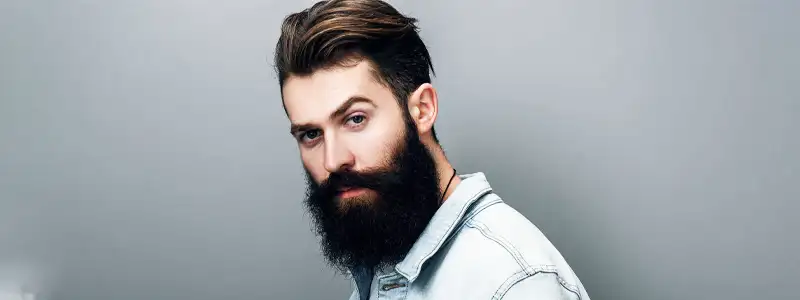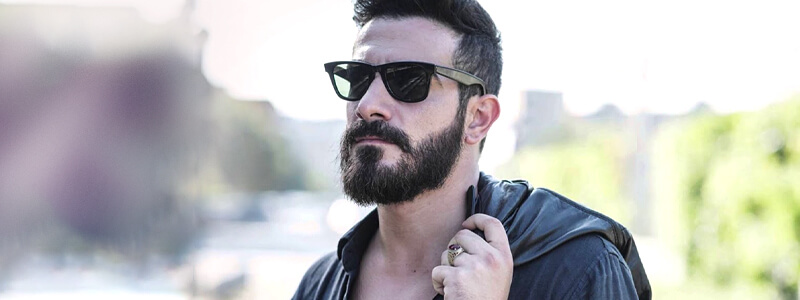Facial Hair Transplant Cost
April 17, 2019

In some medieval cultures, bearded men were considered more masculine than those without them. Usually, such beliefs are discarded as superstitions and backward thinking. However, in this case, these beliefs have stood the test of time and even modern-day men are conscious about their beards. The struggle of developing a healthy beard is different for today’s men. Due to different factors, like poor diet and hormonal imbalance, men face difficulty in growing a fuller beard. Fortunately, they have the option of getting a beard transplant. Although beard transplant results have proved to be exceptional, many men are still skeptical about getting a transplant.
In this article, we have shared some advantages and risks associated with a beard hair transplant. Continue reading if you are having trouble making a decision about getting a beard transplant.
Beard transplantation is a minimally invasive, surgical procedure that helps regrow beard hair. The procedure involves a surgeon extracting healthy hair follicles from the donor area and transplanting them to the face.
A successful beard transplant requires about 4000 to 7000 healthy hair follicles. But if someone has a patchy beard, about 2500 healthy follicles may be enough, too. A patient’s scalp’s backside is the most common donor region and it provides the most long-lasting results. This is due to the reason that the hairs in this region are baldness-resistant. Moreover, since the donor’s hair is taken from the patient’s own scalp, the results are more natural-looking.
Like every surgical and non-surgical procedure, beard transplants also have several pros and cons. For some people, the advantages outweigh the disadvantages while for others it’s the other way round.
When it comes to deciding about undergoing a cosmetic procedure, many factors play a vital role. For instance, beard transplant cost in Dubai is a significant feature in deciding about undergoing this procedure.
Below we have shared some advantages and risks associated with a beard hair transplant. Continue reading to find out more.
Some general advantages of a beard transplant are mentioned below:
The biggest benefit of a beard transplant is the confidence boost it gives. As we have already mentioned, a thick and healthy beard is considered a sign of masculinity. A number of studies have proved that bearded men feel more secure, strong, and confident. Moreover, many women find bearded men more attractive than clean-shaved ones.
Unlike other surgical procedures, a beard transplant doesn’t cause excessive pain. The procedure is minimally invasive and the patient only feels a pinching sensation. In other words, it feels like a rubber band snapping against the skin.
The beard transplant procedure does not have an extensive downtime. Most patients can easily resume their routine activities immediately after the procedure.
The recovery period after a beard transplant is short and quick. Moreover, the recovery period is usually uneventful and discomfort-free.
Although some aftercare is required after beard hair transplantation, it is not too much. With minimal aftercare and medications, the recovery can be improved.
Beard hair transplants have no severe side-effects. However, they cause surgical side-effects, like swelling, redness, inflammation, etc. These side-effects are only temporary and subside within a few days.
The results of a beard transplant are permanent. It is an effective procedure that yields excellent, long-lasting results. Moreover, after a beard transplant, patients can develop a thicker, fuller, and natural-looking beard.
Although a beard transplant is a surgical procedure, it doesn’t have many risks associated with it. The risks that are associated with a beard transplant are only temporary and subside on their own. However, in exceptional cases, some severe side effects may occur, too.
Some general side-effects of beard transplants are mentioned below:
Although swelling is a common side-effect of a beard transplant, it is usually temporary. However, in exceptional cases, it may stay for a longer period of time and not subside as usual. Usually, it takes 7-10 days to subside, but in some cases, it may take up to 2-4 weeks.
For some time after the transplant, shaving the beard area is not allowed. Patients must avoid it or be extremely cautious while shaving. Otherwise, they will be risking the newly transplanted hair. Shaving can damage the follicles and they may start falling out.
Hypersensitivity and bruising are some common side-effects of a beard transplant.
It is common for the incisions to get infected if not properly cared for. So, patients must follow the aftercare instructions given by the doctor.
Some patients consider the beard transplant cost to be high. Moreover, some insurance companies don’t cover the expenses of beard transplants so patients will have to pay out of pocket.
The beard transplant results have proven quite beneficial for a number of patients. However, some men still become doubtful about getting a beard transplant. The reason for this is a lack of information and proper research. So, thorough research is recommended before completely discarding the option of beard transplantation. Patients must consult with their doctor about the pros and cons of a beard transplant before going under the knife. Please remember that a beard transplant is a surgical procedure and cannot be reversed. So, unless you are 100% sure, don’t undergo a beard hair transplant.
Dr. Cagatay Sezgin is a celebrity hair transplant surgeon with over 20 years of experience in hair transplantation and restoration. He is the First Turkish Board Surgeon to become a member of the International Society of Hair Restoration Surgery (ISHRS) and the Asian Association of Hair Transplant Surgeons (AAHRS). Moreover, he has the honor of becoming the first hair transplant surgeon in the world to perform hair, eyebrow, and beard transplantation all in one case and that too in a single session.

April 17, 2019

July 30, 2019

June 15, 2019